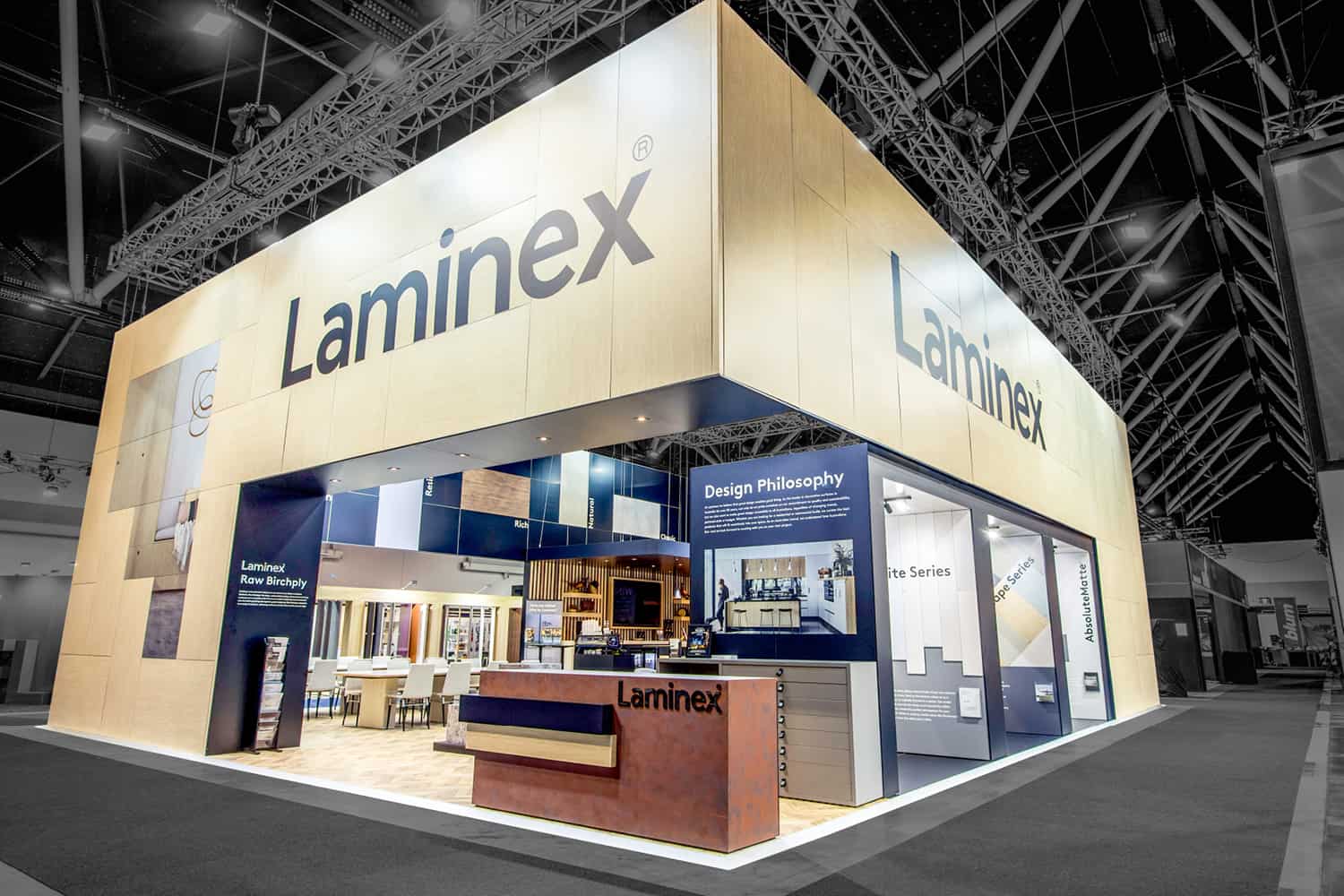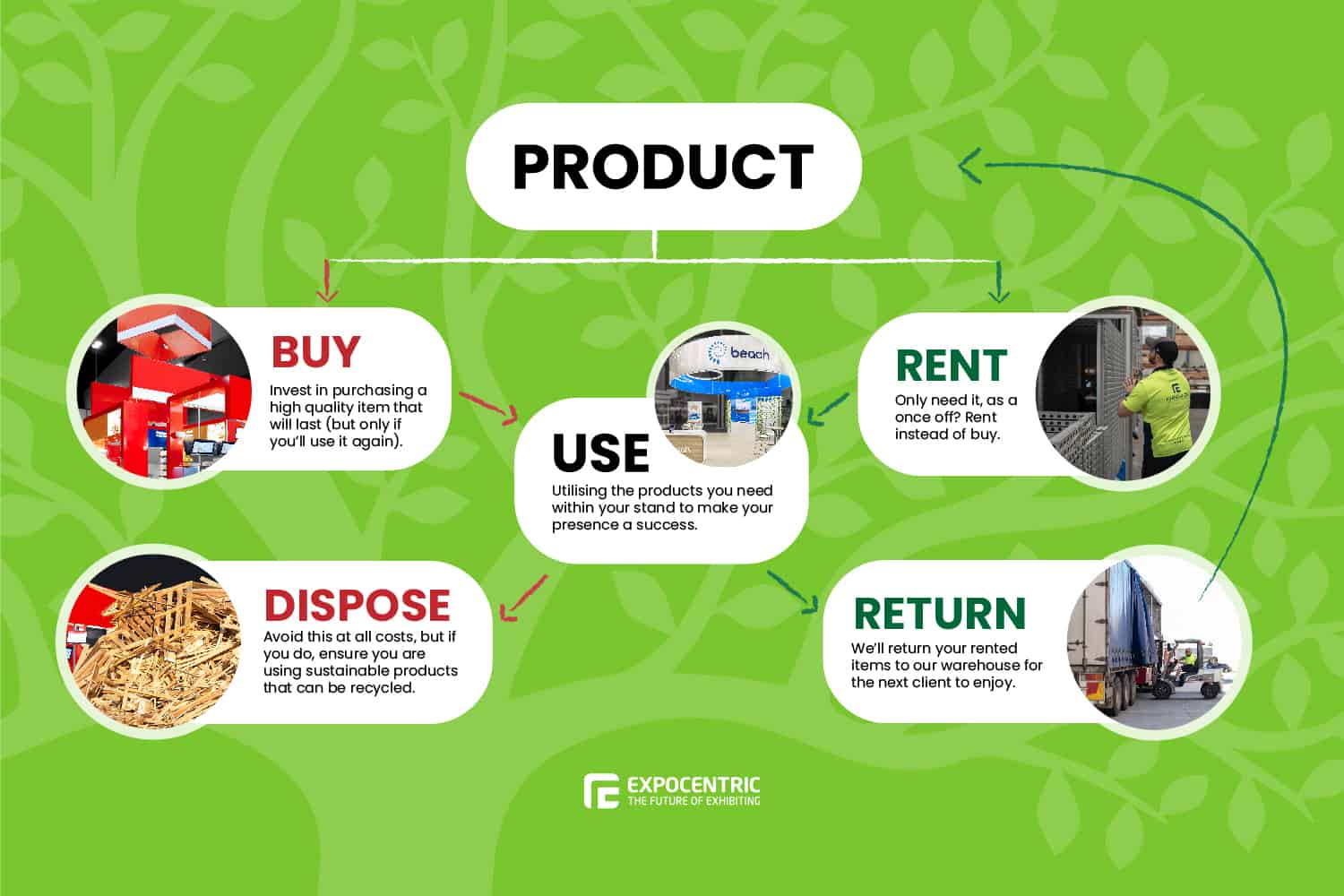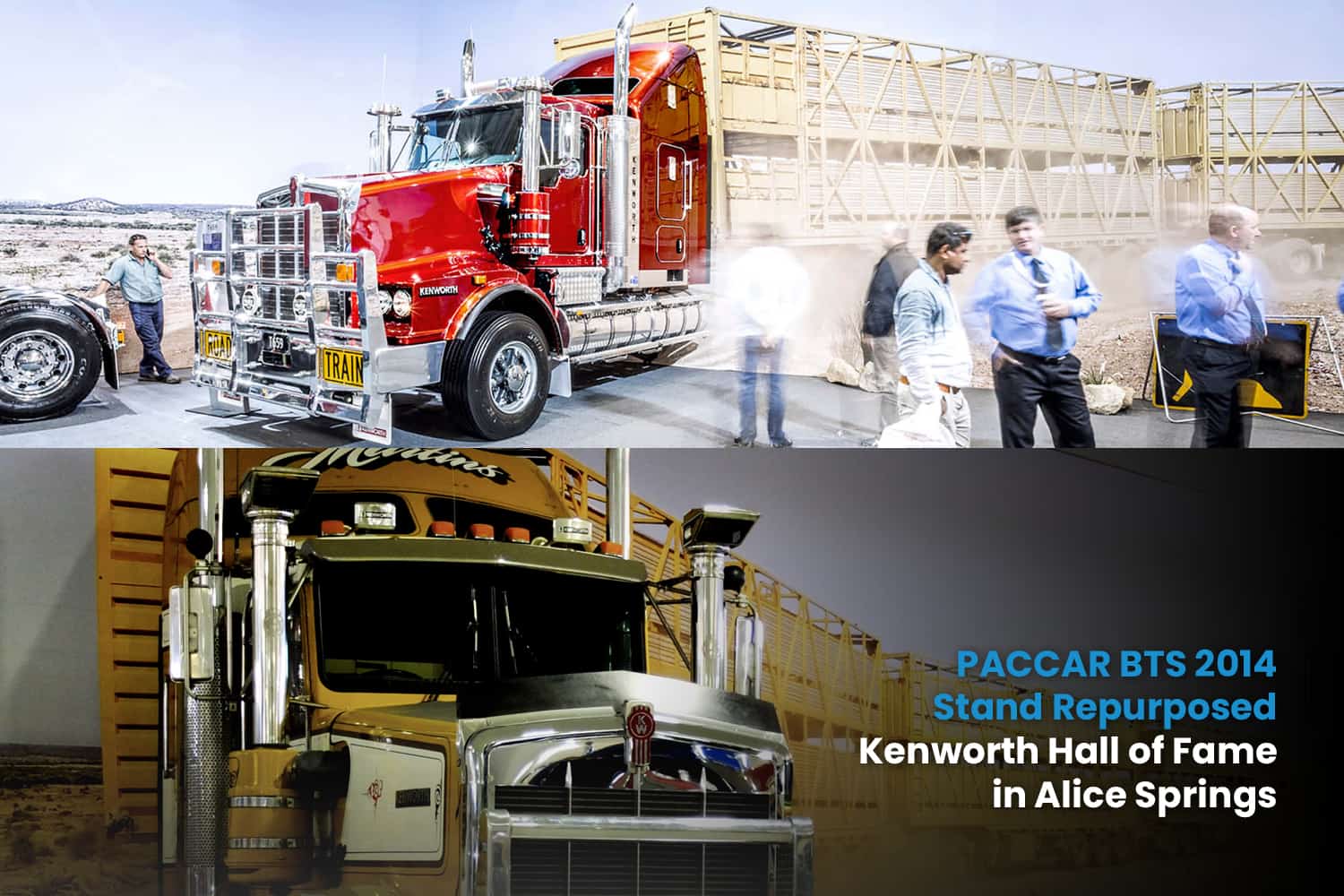It’s not as scary (or as difficult) as you think.
We are all excited for the return of face to face exhibitions after a two year hibernation, but mother nature is bracing herself for the millions of tonnes of waste we are about to create.
It doesn’t however have to be this way, it is our responsibility to make the change and here are our top tips on how your eco-friendly expo stand can stand out without costing the earth.
- Research your materials
You could argue that materials are the largest component of an exhibition stand, so the largest consideration should be given. Within our industry material consideration now goes beyond looking at price and design, here are a few ideas your company can consider when looking to build your next stand:
Recycled timber: Consider using products like oriented strand board (OSB). OSB is a widely used, versatile engineered wood panel made using waterproof heat-cured adhesives and rectangularly shaped wood strands that are arranged in cross-oriented layers. It is similar in strength and performance as plywood, resisting deflection, warping and distortion. It’s an incredible alternative for exhibition stands, and should be kept in mind for those looking to re-use their stand after each event.
Modular systems: Modular systems have come a long way in the event industry. Once seen as a cookie-cutter style stand, is now a leading environmental alternative that can continue to be reused show after show. Alongside is Aluvision, a modular design that offers endless combinations and creative possibilities with a wide range of materials and reusable products. They limit their environmental impact by producing reusable and recyclable light-weight products with a long lifespan. Moreover, their production plant mainly runs on solar energy and sustains its own waste-management program.
Recycled materials: Recycled build materials are becoming more accessible with engineered, natural fluted cardboard sheets leading the way. Products like reboard are a smart alternative being a sturdy, lightweight, and eco-friendly paperboard that makes it possible to make nearly any vision come to life with the power of digital printing. Alternatively Xanita board is an engineered fibreboard manufactured from fibres recovered from recycled cardboard boxes. Xanita core is decorated with various surface finishes, including digital print ready kraft paper liners, or more rigid skins including MDF and birch plywood.
Recycling program: If the selection of materials is out of the question, consideration should be given to the recycling practices taken after the event. Disposing of your singular use stand should no longer be an option. Be informed on where your stand will end up, how parts of it can be re-used at different events, and how your contractor is going to recycle it. Don’t let another stand end up in landfill.

- Rent as much as possible.
If areas of your stand aren’t bespoke to your needs it’s likely they can be rented, by why rent if it can be yours? The bottom line is renting reduces your carbon footprint, but on top of that it lowers manufacturing and in turn lowers your overall production cost.
Wondering what you can rent on your stand? Everything, from furniture in your stand, to flooring and walls, the more you rent the lower the impact you are making. By renting it allows the products to be used before you and continue to be used by those after you. Less products are required to be manufactured as the items are being reused, thus reducing the production carbon emissions.
After the event you eliminate the cost of storage and disposal. The walls, floors and furniture return to their own storage unit, meaning company storage is not required and moreover disposal isn’t required either. Higher rental products mean less of the stand ends up in landfill after each event, and you don’t need to pay for the disposal – it’s win-win.
- Buy: Invest in purchasing a high quality item that will last (but only if you’ll use it again).
- Rent: Only need it, as a once off? Rent instead of buy.
- Use Product: Utilising the products you need within your stand to make your presence a success.
- Dispose: Avoid this at all costs, but if you do, ensure you are using sustainable products that can be recycled for you.
- Return: We’ll return your rented items to our warehouse for the next stand to enjoy.
- Repeat: Keep renting and returning event after event – it’s the most sustainable way!

- Reuse it if you own it.
Get planning. The most effective reusing occurs after conscious planning. Look at the future of your events for your company and how your partners and suppliers can work cohesively here.
With events and exhibitions on your timeline for the upcoming years, it’s time to plan ahead to reduce waste and reuse your stand. Look at building a simplistic design that can be reused for the next 5 to 10 years. Speak as a holistic company to design a stand that can be used by each division within the company, and easily tailored at each event. Using high quality materials that will last, you will find a higher upfront cost now will end up saving you money in the future.
Remove the event specific labelling. Often event content like signage and branding remains consistent from year to year. By removing the event specific labels, your content can be reused after each event, again lowering your cost and carbon emission for production.
Open the barriers to communication between partners and suppliers. Many will have the same objectives to lower their environmental impacts without increasing the cost. Have discussions on how you can share items, when it’s not being used by you. Think about your resellers and the impact they could make at their exhibitions when using your custom stand.
With some forward planning, and consideration, reusing parts of your exhibition stand keeps carbon emissions low and the event industry out of landfill.
- Re-purpose where possible.
Start seeing the use of your exhibition stand beyond the event. If you aren’t renting pieces, then see if there’s an opportunity to use a piece of your stand throughout other elements of your office or showroom.
In recent years a client made an incredible effort to re-purpose their entire stand. The team used different elements of their stand to update their offices, like using their stand carpets on an office that required a carpet upgrade. By the end of the event, every element of their stand was reused within one of their offices across the world.
If you have a showroom then this ones for you! We know that events are often used to showcase new technology or new products. Once the event is complete, move them into your showroom to continue their use.

- Select Local Suppliers
We’re often told to choose local, but it’s even more important for events. Transport not only costs you but also costs the earth.
Although the event you’re exhibiting at may be local to you, it may not be local to your supplier. Choosing suppliers don’t have offices in your area means you and mother nature will pay the price to get it there. We know that transport like petrol trucks add to the pollutants in the air, but consideration should also be given to the number of trips the company may need to take. Hint: Modular stands can be built onsite, and more stands can be packed per truck.
This leads to making a conscious decision to choose suppliers that are already travelling to your event. If these tick your sustainability boxes then go with them. If suppliers are already travelling to your event for other exhibitors, it is likely the carbon emission will be reduced by sending all materials in one go. Moreover, forklift loads can be greater and labour hire can be lower.
- Choose Low Energy Alternatives
Look internally on your stand and see what else can be reduced.
Lighting and power are just the beginning of the energy use on your expo stand. Here are a few tips to keep the impact low:
- Natural lighting: when choosing your stand, understand where natural light will flow at the event and select a location with this in mind
- LED Lights: If lighting is essential, choose LED lights as an energy efficient option. They use up to 75% less energy than regular light bulbs.
- Energy efficiency rating: at times electricity will be required to communicate your message. Most smart technologies have energy efficient options. Use colour-coded energy efficiency guides at the back of electrical equipment to influence decision making as well.
- Turn it off: If it isn’t being used, switch it off. Often devices will run all day at an event despite not always being used. When they aren’t in use, look to turn them off or hibernate them.
What about creating energy? Get clever and look for ways to create energy on your stand. A perfect example is the cycle smoothies. Not only does it promote healthy living, but also works as an engaging activation onsite, rewarded by a human-powered blended smoothie to enjoy!
There’s lots to consider when making the change to exhibit sustainably, and hopefully these tips make some of the decision making a little easier. Remember, if it’s feeling overwhelming, revert back to your company’s core sustainability values.

